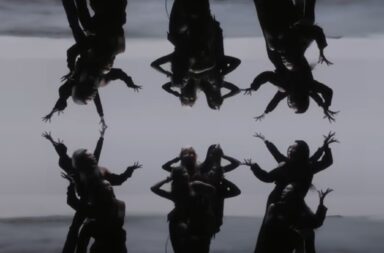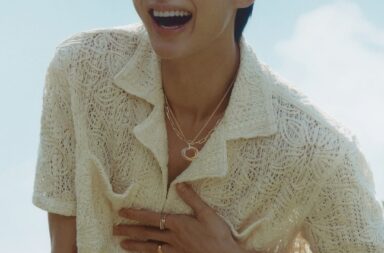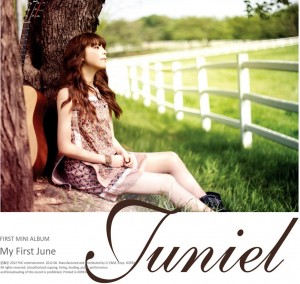 2011, year of the girl group. Check. 2012, year of the boy band. Check, but with reservations. What the pundits didn’t see coming was a strong push from female soloists this year. While 2012 will be noted as a strong year for male groups, what it’ll be remembered for is the year female soloists made their return to the scene. It’s the year the solo ladies dug themselves out from under the heavy pile-up of girl groups, elbowed through the crowd of boy bands, and made a name for themselves amongst the logjam of today’s numerous K-pop acts. There’s no denying it. The single ladies are back and they’re here to stay.
2011, year of the girl group. Check. 2012, year of the boy band. Check, but with reservations. What the pundits didn’t see coming was a strong push from female soloists this year. While 2012 will be noted as a strong year for male groups, what it’ll be remembered for is the year female soloists made their return to the scene. It’s the year the solo ladies dug themselves out from under the heavy pile-up of girl groups, elbowed through the crowd of boy bands, and made a name for themselves amongst the logjam of today’s numerous K-pop acts. There’s no denying it. The single ladies are back and they’re here to stay.
It’s not that the boy bands that returned and debuted this year weren’t adequate. In fact, they were quite stunning. So far we’ve witnessed the debuts of what’s likely to be industry staples of the future: B.A.P and Exo-K. Strong debuts followed by timely, quality comebacks have also helped the likes of NU’EST, Vixx, A-JAX, and BTOB gain wide recognition and support. Not to mention two energetic duos which are guaranteed a minimum degree of relevancy due to them being managed by high profile agencies: JJ Project and Tasty. Established male groups have also made a splash this year with dashing comebacks from the alpha pack and surprising chart-toppers from the beta class. As expected, boy bands made quite the surge this year which has put them on par with fellow female group acts. But what came as a surprise was the sudden re-emergence of the female soloist.
Although boy bands have certainly left their mark on 2012, it’s been the debuting and returning female solo artists who have made quite the dent this year. What once was an industry vibrant with soloists, the exponential proliferation of group artists since 2009 has resulted in a music scene which in recent memory has overlooked the solo performer in favor of the group artist. During the peak of the girl group boom in 2011, there were virtually no actively relevant female solo acts outside of IU and female group members who ventured out into solo projects. As the year turned, there came an unexpected spark, quite fittingly from “Heaven.”
 The high praise and wide reception for the debut of the talented young vocalist known as Ailee signaled a changing perception in the preferences of the market. Yet at the time of her debut, much was still uncertain of what was to come. After Ailee’s debut in February, it remained mostly quiet on the female soloist front until the mid-year when Juniel made her grand debut. Armed with a youthful complexion, acoustic guitar, and the backing of FNC Music, the budding singer-songwriter exploded onto the scene with “Illa Illa.”
The high praise and wide reception for the debut of the talented young vocalist known as Ailee signaled a changing perception in the preferences of the market. Yet at the time of her debut, much was still uncertain of what was to come. After Ailee’s debut in February, it remained mostly quiet on the female soloist front until the mid-year when Juniel made her grand debut. Armed with a youthful complexion, acoustic guitar, and the backing of FNC Music, the budding singer-songwriter exploded onto the scene with “Illa Illa.”
The more than generous receptions for Ailee and Juniel reflect the appeal of their marketing scheme, which is quite different from the onslaught of female groups which have overpopulated the industry. They distinguish themselves from group idols because they are lauded for their abilities as singers, live performers, and musicians. Meanwhile, they are also graced with the charms and looks of a young idol. They are the refreshing blend of idol and artist that the industry has been lacking for years. These top two contenders for “Best New Female Artist” at this year’s MAMA (which currently stands at Juniel 42%, Ailee 26%) most definitely have a bright future ahead of them.
Following on the footsteps of these milestone debuts came the return of industry veterans who sought to re-establish themselves as female soloists to be reckoned with. As mentioned in my MV review for “Dripping Tears,” Son Dam-bi, Ga-in, and Seo In-young have made essential comebacks this year that have paved the way for “aging” female artists. Through their refined sexy images which have been tastefully enhanced by matured concepts, these industry veterans have proven that it doesn’t require flashiness and youth to be appealing and desirable. With their developed sexuality and aged charisma, they’ve successfully carved out a high potential niche which will be expanded upon later.
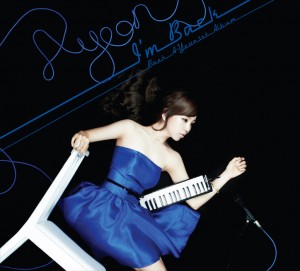 The second half of the year also bared witness to the highly anticipated and prominent debuts of two finalists from the hit reality singing competition K-pop Star, Baek Ah-yeon and Lee Hi. They are part of a huge stock of reality show contestants who have sung their way to fame through surviving endless rounds of eliminations.
The second half of the year also bared witness to the highly anticipated and prominent debuts of two finalists from the hit reality singing competition K-pop Star, Baek Ah-yeon and Lee Hi. They are part of a huge stock of reality show contestants who have sung their way to fame through surviving endless rounds of eliminations.
Of the several televised singing competitions, K-pop Star provides the highest stakes because contestants perform in front of representatives from the three largest management agencies in the industry. The finalists are almost guaranteed a shot to debut with one of the big three as half of the top ten contestants from the show’s first season have signed with YG Entertainment and three have signed with JYP Entertainment.
The implications behind receiving the backing of one of the big three are clearly evident from the successful debuts of Baek Ah-yeon and Lee Hi. Despite coming out with a ballad, “Sad Song” achieved astounding success for a rookie balladeer. Part of the credit goes to the marketing and credibility of JYP, but part of it should also go to Baek Ah-yeon’s already established fan base from the show. With even greater success, Lee Hi’s debut song, “1,2,3,4,” has been topping charts for the past couple of weeks, mostly thanks to her pre-established fan base and YG’s management of her aesthetics. With only three of K-pop Star’s top ten having so far debuted (Park Ji-min has also debuted in the duo 15&) and more seasons on the way, this increasing stock of reality show finalists will soon take the industry by storm.
 Kim Greem’s return in October helped solidify another developing niche in the realm of female soloists. Having been a finalist on another reality singing competition, Superstar K2, Kim Greem has established herself as an acoustic singer who can make sweet music with just her voice and a guitar, sort of an older and more mature version of Juniel.
Kim Greem’s return in October helped solidify another developing niche in the realm of female soloists. Having been a finalist on another reality singing competition, Superstar K2, Kim Greem has established herself as an acoustic singer who can make sweet music with just her voice and a guitar, sort of an older and more mature version of Juniel.
Along with Juniel and IU, they represent an emerging class of female instrumentalists who diverge dramatically from the heavily processed music and manufactured concepts of girl groups. Although we probably won’t be hearing from IU anytime soon, her contributions to the female soloist genre should not be forgotten. As the only truly relevant female solo act in the era of the girl group, her string of hit songs since 2010, culminating in the mega-hit that was “You and I,” along with her releases from early in the year have blazed the path for female artists to be singers, song-writers, instrumentalists, and not just synchronized, auto-tuned puppets. Without IU, there would be no Ailee, no Juniel, no Lee Hi.
Let’s not forget one other path for female soloists carved out by two artists from Cube Entertainment, HyunA and G.NA. HyunA diverges heavily from the rest of the pack through her brand of sexuality which, much like the marketing strategy of girl groups, appeals very heavily to international audiences. While G.NA has hinted at more mature concepts with her debut material, she’s since been relegated to concepts which have put more emphasis on her desirability rather than her aging maturity. These two artists represent a multi-faceted type of idol who are marketed more for their looks than their talent (although talent is also important). In other words, they are basically one-member girl groups. Nevertheless, the restrictions of age will ultimately catch up to them and they will have to evolve into more mature concepts in order to stay relevant.
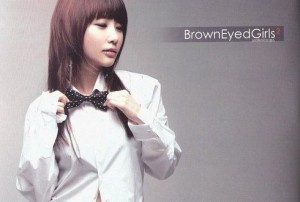
K-pop runs in cycles, and history is bound to repeat itself. It’s not like female soloists have never existed. After the disbandment of original idol girl groups such as Fin.K.L, S.E.S, Cleo, and Baby VOX in the early 2000s, female soloists became the next big thing as popular members branched off from the perishing life expectancy of their groups and established solo careers, of the most prominent was Fin.K.L’s Lee Hyori. This led to an expansion in the market for other female soloists the likes of BoA, Bae Seul-gi, and Lim Jeong-hee, along with returning older generation artists like Park Ji-yoon, Baek Ji-young, and Uhm Junghwa. The same thing can be said for male soloists who also populated the scene at the time with up and coming acts like Rain and Se7en, along with returning acts like Wheesung, Kim Bum-soo, and Kim Jong-kook.
If history is an indicator of what is to come, then the market will soon be flooded with aging girl group members who will be looking to go solo to sustain and extend their careers. The average age of Brown Eyed Girls is already approaching 30 (held low mostly by their maknae Ga-in at 25), and with the upcoming debut of JeA, they would have all made solo ventures. Other established girl groups to include soon to be aging (if not already aging) members are After School, Kara, and 2NE1. Moreover, with the lifespan and average age of arguably K-pop’s two biggest girl groups, SNSD and Wonder Girls, indicating an approaching expiration date, more solo ventures are sure to come from the most talented members of these groups.
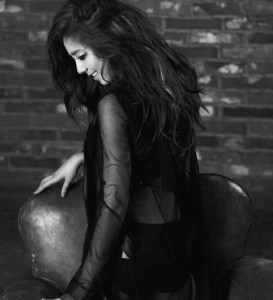 Which brings us back to Son-Dambi, Ga-in, Seo In-young, and the important niche they’ve created for the refined aging woman. They represent a slightly older generation of female soloists who have the looks, abilities, and talents to make it as soloists. Ga-in and Seo In-young had their starts as members of a group but they’ve since established themselves as viable soloists. As a result, their careers will likely continue pass the expiration of their groups as they look to expand on their established mature concepts. This niche created for the aging female idol will be one soon to be explored and filled out by many current girl group members because it is the most sensible next step for their careers.
Which brings us back to Son-Dambi, Ga-in, Seo In-young, and the important niche they’ve created for the refined aging woman. They represent a slightly older generation of female soloists who have the looks, abilities, and talents to make it as soloists. Ga-in and Seo In-young had their starts as members of a group but they’ve since established themselves as viable soloists. As a result, their careers will likely continue pass the expiration of their groups as they look to expand on their established mature concepts. This niche created for the aging female idol will be one soon to be explored and filled out by many current girl group members because it is the most sensible next step for their careers.
For those who aren’t singers, song-writers, instrumentalists, or perform all that well live and must rely on their physical appearance as part of their appeal, this is the only niche available to them. Even if they choose to remain in girl group mode, as HyunA and G.NA have, they will eventually be forced to switch to a more mature and refined image as age begins to play a factor. Whether this concept will catch on or not, it’s sure to be given a good try due to the high number of idols who will require jobs upon the eventual disbandment of their groups.
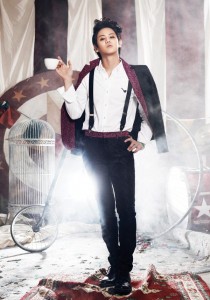 In conclusion, we are bearing witness to the beginnings of a transition period in K-pop. As these second generation girl groups expire, it will lead to another influx of popular female soloists. Similarly for male acts, 2013 will mark the return of the male soloist. As male groups will ultimately be postponed or forced to disband due to member enlistments, male group members will need to rely on solo appearances to sustain themselves, most likely in the current mold of SS501’s members. Most members of Big Bang have readily prepared themselves with solo debuts. Infinite’s Sung-gyu just made his solo debut and Yo-seob of Beast is set to make his solo debut soon.
In conclusion, we are bearing witness to the beginnings of a transition period in K-pop. As these second generation girl groups expire, it will lead to another influx of popular female soloists. Similarly for male acts, 2013 will mark the return of the male soloist. As male groups will ultimately be postponed or forced to disband due to member enlistments, male group members will need to rely on solo appearances to sustain themselves, most likely in the current mold of SS501’s members. Most members of Big Bang have readily prepared themselves with solo debuts. Infinite’s Sung-gyu just made his solo debut and Yo-seob of Beast is set to make his solo debut soon.
Furthermore, management agencies have also readied themselves to gain from this future proliferation of male soloists by debuting or returning their male soloists. We’ve witnessed the debuts of male finalists from Superstar K2 this year – John Park and Baek Seung-heon – with Kang Seung-heon set to make his YG debut early next year. Cube has recently debuted a finalist from Birth of a Star, Roh Ji-hoon. Industry veterans K.Will and Kim Jong-kook have also re-established themselves with recent comebacks. The single guys are set to make their run in 2013.
Unlike the previous generation, because modern K-pop has secured a much larger global market, we might not see the complete disappearance of girl and boy groups from the scene upon the expiration of the current ones. Thanks to the much expanded international market, there will still be a demand for boy and girl groups from global audiences who were won over by group artists during the K-pop boom of recent years. In the spirit of Thanksgiving, let’s give thanks to this current generation of group artists who have contributed towards the expansion of K-pop around the world, creating a bigger market where groups and soloists may coexist in harmony. In return, girl groups should be thankful for this current wave of female soloists who have hit the scene for they are blazing a trail which will bring more variety of genres to K-pop, one which will allow individual group members to continue their careers post-disbandment of their groups.
Who are your favorite female soloists of 2012? Which individual group members have the most potential to make it as a soloist? Leave your comments below!
(Mnet Asian Music Awards, YG Entertainment, FNC Music, YMC Entertainment, JYP Entertainment, LOEN Entertainment, Nega Network, Pledis Entertainment, Cube Entertainment)
